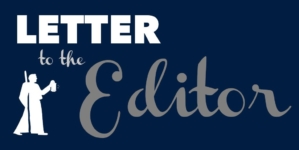‘Leadership’ fundamentally implies that there is ‘followership’
Published over recent months has been a series of changes in a wide range of public sector organisations.
Logically the substantive changes have begun at Board levels, at which there was little or no pretence of transition, but rather peremptory replacements. Presumably what performance evaluation was conducted must have consistently revealed that in each instance Board members consisted of the most culpable levels of decision-makers.
At the next lower level – mostly that of Chief Executive Officer/General Manager – there was certainly no welcoming exchange, as the respective parties were never even to hail each other from any distance whatsoever.
Given the apparent absence of any ‘intelligence’ worth sharing about strengths, weaknesses, opportunities and threats related to:
a) organisation as a whole
b) specified Departments
c) identifiably individual underperformers
Some observers would be left to wonder whether the new management team/s have been required to ensure that specific strategic objectives are achieved. For such a fundamental Mission would have informed how and why the respective teams would have been selected.
Indeed the approach of ‘teamanship’ is critically relevant – an attribute about which authoritarian decision-makers do not appear to regard as of high priority. As a consequence the new Chairman of a Board needs to invest urgent time to familiarise with a series of personalities (members) who are in turn caught in the same ‘distance’ dilemma – one that would be better addressed by a comprehensively structured induction programme, which of course would include surviving senior executive employees of the organisation. It should be an exercise conducted on as level a playing field as possible, that would identify (in sporting parlance) ‘square legs’ if not ‘pegs’; ‘straight drivers’ and ‘square cuts’, if not ‘late cutters’; reliable fieldmen, if not ‘drop catchers’, whether in the ‘slip’ or on the ‘boundary’.
The scenario of change becomes particularly challenging for an organisation which is forced to invest in a wide range, and different levels, of ‘managerial’ appointees to operational areas that might include existing aspirants for the advertised vacancies. At least relationships between ‘newcomers’ and ‘old hands’ must be deliberately worked out.
It becomes more sensitive however, when that ‘newcomer’ is a total stranger to the type of organisation as a whole. Whose responsibility is it therefore to prepare a conducive, level playing field of accountability relationships?
In the immediate context such responsibility falls squarely on the shoulders of the ‘Captain’ who would be the Chief Executive Officer/General Manager. The question then arises as to whether or not that new incumbent is a leader as distinct from just a Manager?
‘Leadership’ fundamentally implies that there is ‘followership’; that example set can be productively followed; that ‘people’ are influenced to work with, rather than for by communication with, rather than directions – aimed at creating an environment of equality by listening intently; and in the process understanding that it is the expressed (and perceived)moral authority of that Leader which is reflected in the quality of performance of those for whom the former is accountable.
It has to be understood by all involved in offering and accepting respective responsibilities to change or renew systems, operations, processes, that they must be continuously conscious of the emotional implications of people learning to adapt to new or restructured careers, and the overflow onto domestic and other social relationships.
In the final analysis therefore our new corporate leader has little or no choice but to be a Servant Leader.
Yours truly,
E.B. John






















